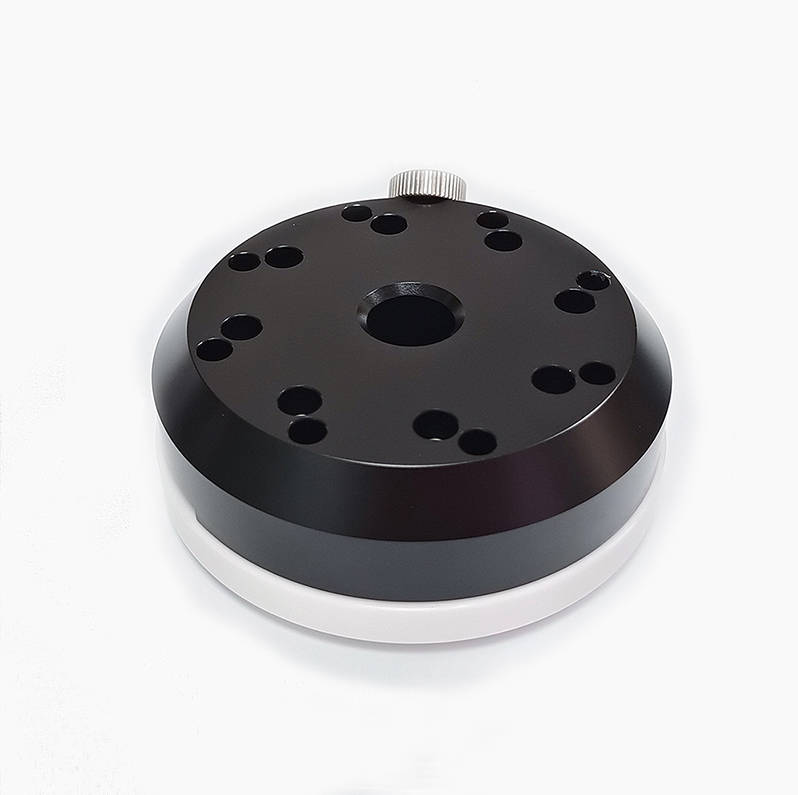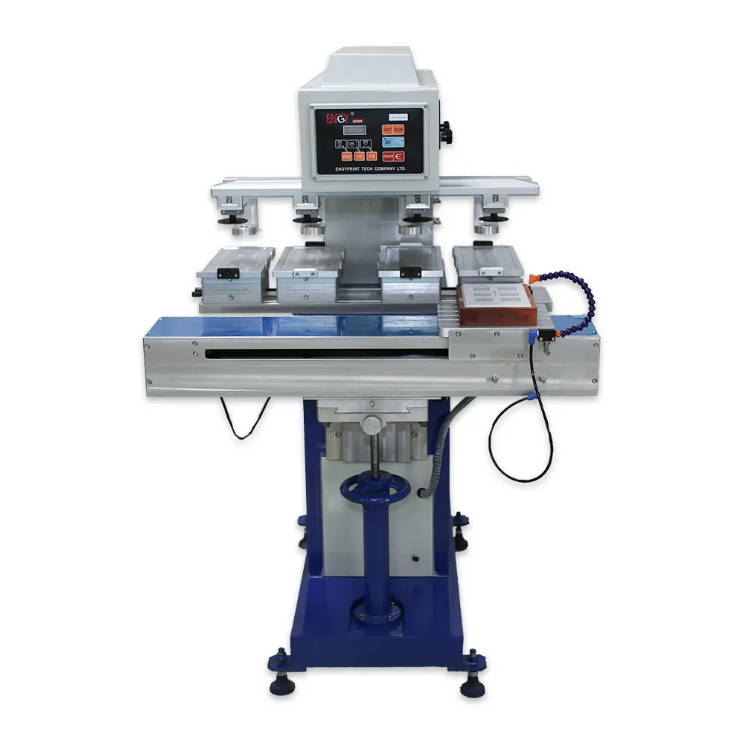Introduction
Pad printing has become an indispensable technique in various industries, from automotive to electronics, for transferring images onto three-dimensional objects. At the heart of this process lies the cliche plate, a critical component that holds the image to be printed. For businesses engaged in high-volume production, choosing the right type of Pad Printing Cliché plate is crucial for ensuring quality, efficiency, and cost-effectiveness.
This article aims to compare two primary materials used in manufacturing cliche plates: polymer and steel. By understanding the key differences between these materials, purchasers can make informed decisions that align with their specific production needs and budget constraints.

Understanding Pad Printing Cliche Plates
Before delving into the comparison, it’s essential to grasp the fundamental role of cliche plates in the pad printing process. A Cliché plate, also known as a printing plate, is a flat surface that carries the etched or engraved image to be transferred onto the object. When used in a Pad printing machine, ink is applied to the cliche plate, filling the etched areas. A silicone pad then picks up this ink and transfers it to the target object, creating a crisp, detailed image.
The quality of the cliche plate directly impacts the final print result, making it a crucial element in the pad printing process. Now, let’s examine the two main types of cliche plates: polymer and steel.
Polymer Cliche Plates
Material Characteristics
Polymer Pad Printing Cliché plates are made from photopolymer materials, which are light-sensitive resins. These plates are typically thinner and more flexible compared to their steel counterparts. The flexibility of polymer plates can be advantageous when printing on slightly uneven surfaces.
Manufacturing Process
The manufacturing process for polymer cliche plates involves photopolymerization. This method uses UV light to harden specific areas of the photopolymer material, creating the desired image. The process is relatively quick and cost-effective, especially for smaller production runs.
Advantages of this manufacturing process include:
- Faster production time
- Lower initial costs
- Ability to produce plates in-house with the right equipment
However, limitations include:
- Less durability compared to steel plates
- Potential for slight image degradation over time
Performance in High-Volume Applications
When it comes to high-volume pad printing applications, polymer cliche plates offer several benefits:
- Print Quality: Polymer plates can produce high-quality prints with good detail reproduction, especially for designs with large solid areas.
- Lifespan: While not as durable as steel, polymer plates can still handle moderate to high-volume runs.
- Maintenance: Polymer plates are easier to clean and maintain due to their lighter weight and flexibility.
- Cost-effectiveness: For short to medium print runs, polymer plates offer a more economical solution due to their lower initial cost.
Steel Cliche Plates
Material Characteristics
Steel Pad Printing Cliché plates are made from hardened steel or stainless steel. These plates are characterized by their rigidity and superior durability. The hardness of steel plates allows for extremely fine detail reproduction and consistent print quality over extended production runs.
Manufacturing Process
Steel cliche plates are typically created through chemical etching
The manufacturing process for steel plates is generally more time-consuming and expensive than for polymer plates.
Performance in High-Volume Applications
Steel cliche plates excel in high-volume pad printing applications for several reasons:
- Print Quality: Steel plates maintain exceptional print quality and consistency even after hundreds of thousands of impressions. They are particularly well-suited for designs requiring fine details or precise halftones.
- Lifespan: The durability of steel plates is unmatched. They can withstand thousands of impressions without significant degradation, making them ideal for long production runs.
- Maintenance: While steel plates require careful handling due to their weight, they are resistant to wear and tear, reducing the need for frequent replacements.
- Cost-effectiveness: Although the initial cost is higher, steel plates become more cost-effective in the long run for high-volume production due to their extended lifespan.
Comparative Analysis
Cost Considerations
When choosing between polymer and steel cliche plates, cost is often a primary factor:
- Initial Cost: Polymer plates are significantly less expensive upfront compared to steel plates.
- Long-term Cost: For high-volume applications, steel plates may prove more economical due to their longevity and consistent print quality over time.
Print Quality and Consistency
Both polymer and steel plates can produce high-quality prints, but there are differences:
- Fine Details: Steel plates generally offer superior reproduction of fine details and complex designs.
- Consistency: Steel plates maintain print quality over longer runs, while polymer plates may show slight degradation over time.
- Large Solid Areas: Polymer plates often perform well with designs featuring large solid areas.
Durability and Maintenance
The choice between polymer and steel significantly impacts durability and maintenance requirements:
- Lifespan: Steel plates can last for thousands of impressions, while polymer plates typically last much less.
- Handling: Polymer plates are lighter and more flexible, making them easier to handle and store.
- Cleaning: Both types require regular cleaning, but polymer plates are generally easier to clean due to their flexibility.
Application Suitability
The choice between polymer and steel cliche plates often depends on the specific application:
- Polymer Plates: Best for short to medium production runs, prototyping, and designs with large solid areas.
- Steel Plates: Ideal for high-volume production, designs with fine details, and applications requiring long-term consistency.
Factors influencing the choice include production volume, design complexity, budget, and required print quality consistency.
Case Studies and Industry Examples
To provide a clearer understanding of how polymer and steel cliche plates perform in real-world scenarios, let’s look at some industry examples:
Polymer Cliche Plates
Case Study: A Toy Manufacturer
A toy manufacturer producing custom-printed toys opted for polymer cliche plates for their pad printing machine. The company needed to print vibrant, large solid color areas on various toy parts. The flexibility and lower cost of polymer plates allowed them to produce high-quality prints at a reduced initial investment. While the plates required replacement after several thousand impressions, the overall cost savings and ease of use made polymer plates the preferred choice for their medium-volume production runs.
Lessons Learned:
- Polymer plates are cost-effective for medium-volume runs.
- Suitable for designs with large solid areas.
- Easier handling and maintenance.
Steel Cliche Plates
Case Study: An Electronics Manufacturer
An electronics manufacturer specializing in high-precision components used steel cliche plates for their pad printing machine. The company needed to print intricate logos and fine details on small electronic parts. The durability and precision of steel plates ensured consistent print quality over millions of impressions. Despite the higher initial cost, the long-term savings and superior print quality made steel plates the optimal choice for their high-volume production needs.
Lessons Learned:
- Steel plates offer unmatched durability and print consistency.
- Ideal for high-volume production and detailed designs.
- Higher initial cost offset by long-term savings.
Conclusion
Choosing between polymer and steel cliche plates for high-volume pad printing applications involves careful consideration of several factors, including cost, print quality, durability, and specific application requirements.
Further more, customer can also choose aluminum plate if the printing quantity is not big.





